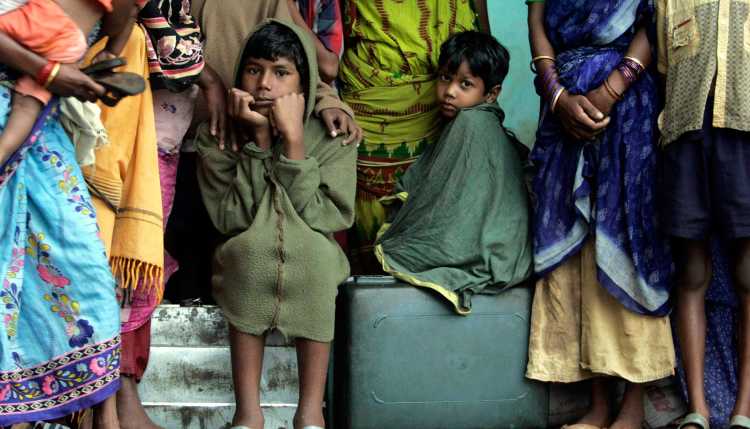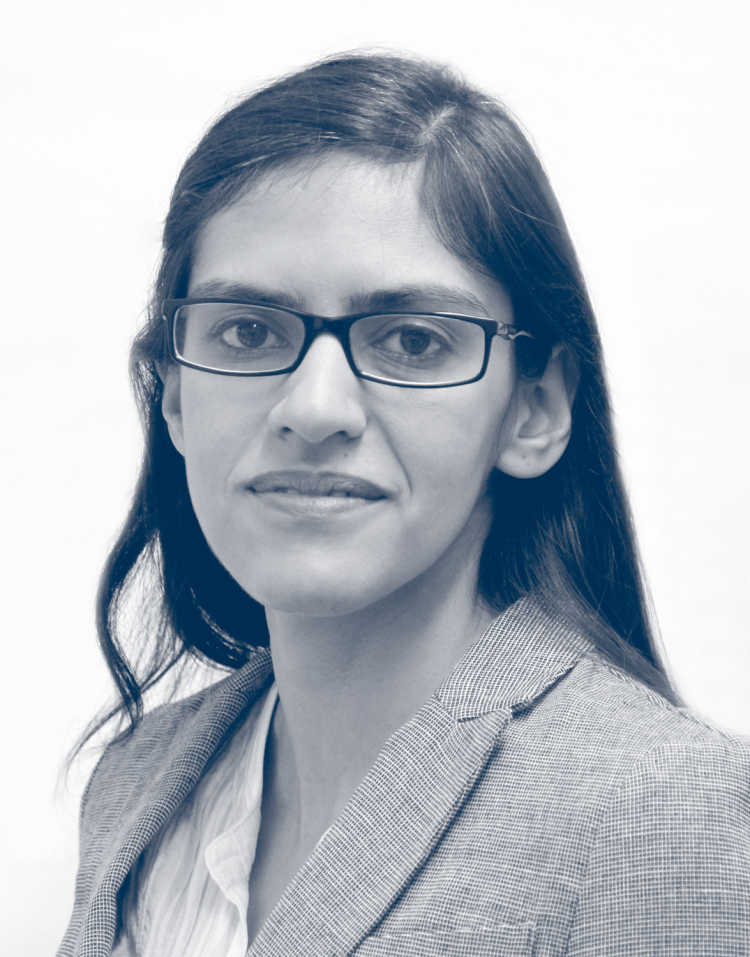- Home
- Publications
- GIGA Focus
- Polarisation and Politicisation: The Social Media Strategies of Indian Political Parties
GIGA Focus Asia
Polarisation and Politicisation: The Social Media Strategies of Indian Political Parties
Number 3 | 2019 | ISSN: 1862-359X

Ahead of the general election in April and May 2019, Indian political parties are using social media aggressively to propagate their ideology, mobilise public opinion, set policy agendas, and discredit detractors. Since the 2014 general election, India’s two major political parties – the Bharatiya Janata Party, which currently leads the coalition government, and the Indian National Congress, the main opposition party – have invested heavily in digital political campaigning.
Political parties use social media to directly and continuously engage with voters. More so than traditional media, social media can amplify and mobilise political opinions and reach out to even the remotest geographical areas.
Social media’s unique value is that it allows for both mass messaging and micro-targeting. Bolstered by grass-roots campaigning, it is immensely powerful in moulding public opinion both in India and beyond.
While facilitating civic engagement for a more participatory democracy, social media is also misused for propaganda, hate speech, and disinformation campaigns, which can undermine the pluralistic foundations of Indian democracy.
Policy Implications
Today, successful political campaigns rest on the innovative employment of social media, a trend that has made voters increasingly invested in politics and parties. But it has also provided grist for political polarisation, particularly in heterogeneous societies such as India. Given this scenario, foreign policy observers should prepare for a more politicised and domestically contested conducting of Indian foreign affairs in future.
Social Media in Indian Elections: From 2014 to 2019
India’s 2014 general election saw the country’s highest-ever voter turnout, with 554 million people exercising their mandate to elect the 16th Lok Sabha (Lower House of the Indian Parliament). Strong anti-incumbency sentiment had been fuelled by allegations of corruption and policy paralysis levelled against the United Progressive Alliance (UPA) government led by the Indian National Congress (INC). India’s young population, about 65 per cent of whom are below the age of 35, was especially eager for change. The 2014 election was also the first where social media users were taken seriously as voters by political parties, who used frontline technology and innovative ideas for voter outreach. For the first time, leading Indian advertisement agencies, public relations firms, social media analytics and marketing companies, citizen volunteer groups, non-resident Indians, and offline campaigners came together to promote the political party of their choice. Cresting on the wave of an anti-corruption movement led by activist Anna Hazare, starting in 2011, social media emerged as a key barometer of public opinion. Those political parties that leveraged social networking sites (SNS) to respond to their supporters turned out to be the most successful in electoral terms, as illustrated by the Bharatiya Janata Party (BJP) securing an unprecedented 282 out of 545 seats in the current parliament.
Five years later, social media has established itself as the major communication platform for India’s political parties. Youth participation in political discourses via SNS has increased. India today accounts for more than 300 million smartphone users, and its 200 million-plus WhatsApp users forward the most content worldwide (Times of India 2018). Social media effectively connects with one-third of Indian voters. If the 2011 Census data is extrapolated to the upcoming 2019 election, there could be 130 million first-time voters – most of them social media users. This electorate is currently being targeted aggressively by political parties, who hope these first-time voters become lifelong supporters.
However, the democratisation of social media as a political communication platform in India has not meant its professionalisation as an information-sharing one. Unimpeded by the gatekeeping function of traditional media for content accuracy and ethics of responsible reporting, political parties are using social media for a divisive campaign of religious and caste politics. For instance, a report by the Oxford Internet Institute identified India as one of the 10 major countries of organised social media manipulation (Bradshaw and Howard 2018). The Indian news channel NDTV mined hate speech and “dog-whistling” content (coded messages pandering to caste and religious biases), and found that divisive rhetoric by senior politicians had increased almost 500 per cent over the last four years (Jaishwal, Jain, and Singh 2018). The Observer Research Foundation, meanwhile, mapped hate speech on social media and found religio-cultural practices to be the explicit basis for hate comments mostly aimed at the Muslim community (Mirchandani 2018). Whereas opposition parties accuse the BJP of religious polarisation to shift attention from the country’s flagging economy, the INC has responded with its own campaign of fear and anger. As a consequence, the increase in polarising content within the social media campaigns of India’s major political parties has emerged as a defining characteristic of the 2019 electoral contest.
Based on illustrations of both major Indian parties’ use of social media, this contribution assesses the impact that a fast-changing media environment is having on India’s elections. Comparing the BJP’s and the INC’s social media campaigns, we detail how the medium affects the message – thereby deepening societal fault lines. Moreover, we argue that social media’s polarising effects will eventually affect the conducting of Indian foreign policy too. Observers should therefore monitor social media debates closely and prepare for a more politicised domestic one around Indian foreign affairs.
The BJP’s 2019 Social Media Campaign
In 2014, the BJP’s goal was to transform the image of its star campaigner Narendra Modi from a right-wing politician to the people’s leader with a decisive development agenda. Modi had used the previous decade as chief minister of Gujarat to showcase his state as a model of growth and promised to “reform, perform, transform” the country. Nationally, a social media blitz was unleashed for an image makeover of the BJP and Modi, where their Hindutva (a political ideology that views India as a land of Hindus and understands Hinduism primarily as a cultural construct in opposition to Western, secular values) image was airbrushed. However, in states where the average voter was more responsive to religious or caste appeals, Modi was portrayed as the alpha male Hindu leader – or as a chai wallah (“tea seller”) who identified with the backward castes (Ullekh 2015). This religious image was underplayed on social media, however, where the target audience was mostly urban professionals more invested in the economy than identity politics.
The unfolding 2019 campaign has further developed the BJP’s targeting strategy via the systematic use of WhatsApp groups, though with one distinctive difference from the 2014 campaign: posts have become more polarising, as evident from the BJP’s state election campaigns in Gujarat (2017), Uttar Pradesh (2017), Karnataka (2018), and Rajasthan (2018). The content of their posts has been increasingly informed by the Hindu nationalist vision of their parent organisation, the Rashtriya Swayamsevak Sangh (RSS) – the world’s largest national volunteer organisation, whose stated goal is to transform India into a Hindu Rashtra (“Hindu state”).
Today, the BJP’s social media strategy forks in two directions: the positive campaign messaging of Modi, and the ideological/religious polarisation and opposition suppression tactics of the BJP’s information technology cell. In Modi’s optimistic messages he projects himself as the benign patriarch who speaks for all Indians, while still maintaining his Hindutva beliefs. This is evidenced by his noticeable silence on violent crimes against religious minorities and Dalits (castes who have been traditionally subjected to untouchability) and his attacks on press freedom.
This coupling of digital and populist politics marks a major trait of the 2019 election: its move towards an app-based election, primarily the Narendra Modi (NaMo) app and WhatsApp. The NaMo app typifies Modi’s governing style of directly calling on the people to participate in government policies and to sign up as volunteers for his programmes (Figure 1 below). Among other things, it includes a “To-Do” list for citizens, an infographics section on the government’s achievements, a “Know the Man�” section about Modi, and streams of Maan ki Baat (Modi’s monthly radio talk). The more people participate in it, the more “citizenship points” they rake in – making individuals personally invested in Modi and the BJP. The party’s polling booth workers have been instructed to use the NaMo app to connect with voters, and the app is also used for opinion polls and to gain feedback on national and local issues as well as the performance of politicians. The downside of the app is that any user can post content of any kind to it, making it susceptible to helping spread fake news and polarising messages (Bansal 2019).

The party’s social media strategy is decided by their “War Room,” comprised of core BJP members and headed by party president Amit Shah. Currently, their IT cell has 100–150 people on its payroll and around 1.2 million volunteers working for it (Ullekh and Shah 2018). Their state units promote a Hindu nationalist identity alongside the party’s development agenda. This allows the BJP to employ religion expediently, while still presenting a national image that is more inclusive. Like religion, patriotism is used to conscript supporters and identify opponents – often branded as “anti-nationals.” This is mostly carried out by the “troll army” of men and women espousing hyper-nationalist and Islamophobic views. Their abuse offensive has been scaled up systematically since 2014 against journalists, academics, and critics of the BJP and the RSS. In 2016, an India Today investigation revealed how IT companies like WebAppMate and VibgyorTechnosystems sold services to political parties specifically for spreading malice and creating religious polarisation. Such companies doctor facts, create fake videos, and spread these through proxy servers located overseas as part of smear campaigns (Figure 2 below).
Trolls and bots (scripts that run automated tasks on the Internet and are taken to be human “followers” that assure “Likes”) are used to manufacture political consent. Some Twitter trolls were also part of the Super 150, a group of social media influencers hosted by Modi at his official residence in 2015. Digital campaigning has taken a pernicious form with bulk WhatsApp forwards too. As Ankit Lal, the social media coordinator of the Aam Aadmi Party, an opposition party, puts it: “We wrestle on Twitter. The battle is on Facebook. The war is on WhatsApp” (Goel 2018). During the 2018 Karnataka state election, the BJP state unit created 23,000 WhatsApp groups – each with 80–100 members – for hyper-local (location- and community-specific) messaging (Ullekh and Shah 2018). Such groups engage in name-calling, memetic warfare (using memes to ridicule and discredit opponents), hashtag warfare (pinpointing the enemy by mobilising supporters around an issue and making it trend on social media), disinformation, biased reporting, invoking the dominant religion, and countering any criticism of the BJP with whataboutery (making unrelated counter-accusations to deflect criticism).

Arguably, WhatsApp has emerged as the weapon of choice for the 2019 election – as it can reach voters in locations where other platforms cannot. While it has been used for sharing relevant information by political parties, it can also rapidly spread disinformation. Its encryption code makes it difficult to locate the source of mischievous posts. Mob lynching by cow vigilante groups (beef is banned in India in deference to Hindu sentiment) can be instanced here (Subramanya 2017). The Indian news website, The Quint, has documented this religiously motivated phenomenon under its “When WhatsApp Rumours Kill” section. There is no evidence of the BJP’s complicity in these lynchings, but examples of high-ranking party members supporting cow protectors suggest, at least, tacit approval.
The BJP, through rallies and SNS, has started a massive social media volunteer recruitment drive under the Mera Booth Sabse Mazboot (“my worker at the polling booth is the strongest”; Figure 3 below) hashtag campaign. This is directly linked with their new WhatsApp strategy for the 2019 election. A key role is played by a mobile phone pramukh (“main worker”), with one for each of the country’s 927,533 polling booths.

In Rajasthan, during a meeting with such booth-level workers, Amit Shah denounced Rahul Gandhi’s followers as “goons” and “foreigners” and exhorted the crowd to make the BJP’s messages – real or fake – go viral (The Wire 2018) – a volte-face from his July 2018 injunction against posting fake news. Shah claimed to have a 3.2 million-member WhatsApp group in Uttar Pradesh to whom messages were sent every morning. How such messages influence social media warriors can be gleaned from the example of Pranav Bhat, a BJP youth leader in Karnataka. He was quoted in an article in the New York Times saying that he used WhatsApp to communicate constantly with the 60 voters that he had been assigned to track for the BJP prior to the state election. He shared dire warnings about Hindus being butchered by Muslims, including a debunked BJP claim of 23 activists being killed by Muslim jihadis. Also shared were propagandist news stories, including a fake poll (allegedly by the BBC) predicting a clean sweep for the BJP in the Karnataka election (Goel 2018).
The INC’s 2019 Social Media Campaign
A latecomer to the field of social media campaigning, the INC has stepped up its online communications since May 2017. In social and economic terms, the INC is a centre-left party, avowedly secular, and prone to virtue-signalling terms like “inclusive” and “unity in diversity.” This is to contrast them with the BJP, who are viewed as divisive. Yet the INC’s social media posts have, in recent times, projected what some have called “soft Hindutva” politics. This harking back to their 1980s’ practice of right-leaning populism is widely seen as a response to the BJP’s criticism of the INC being a pro-Muslim party. From 2017 onwards, their media posts have, among other things, highlighted Rahul Gandhi’s frequent visits to Hindu temples (Figure 4 below), his announcement of wearing janeu (the “sacred thread” of Brahmins), calling himself a Shiv Bhakt (“devotee of the Hindu God, Shiva”), and invoking Hindu deities during public speeches. All this took place in BJP-ruled states, which have a Hindu majority that went to the polls in 2018.

Gandhi’s social media posts assert his Hindu identity without demonising Muslims, but also make them “invisible” from his campaigns – quite unlike his grandmother Indira Gandhi, who used to go temple-hopping before elections in the 1970s and early 1980s while also reaching out to Muslim and Christian voters. In 2014, the INC’s social media posts played up the fear of a “communal party” (i.e. one mobilising against a particular religious group – in this case, Muslims) coming to power – but failed to provide a clear alternative. Now there is no such ambiguity. The INC’s social media wing has adopted the BJP’s tactics of focusing on a star campaigner, Rahul Gandhi, projecting his Hindu identity, and denouncing the BJP as a “pro-corporate, anti-people” government. Modi’s gibe about the INC-led UPA government being suit boot ki sarkar (“a suited and booted government for the rich”) in 2014 is now being used against him; for instance, the INC’s posts constantly highlight the fact that the BJP is the largest beneficiary of corporate funding (Pradhan, Chaudhary, and Roy Chowdhury 2018; Figure 5 below).

Straitened funds directly impact the INC’s social media clout. While the party has curbed expenses and aggressively sought crowdfunding on its SNS (Talukdar 2018), it is still behind the BJP in online campaigning for the 2019 election. A revamped social media cell spearheaded by the young actor-turned-politician Divya Spandana plays a vital part in the INC’s campaigning. Spandana, who had a massive Twitter following and was known for her anti-BJP posts, was handpicked by Gandhi in 2017 to ensure a massive uptick in the INC’s social media followers (Bharadwaj and Khajane 2018). Her team managed to convert the convention-bound leaders of the INC into active social media participants, and popularised the social media handles of Rahul Gandhi (@OfficeOfRG/@RahulGandhi) and the INC (@INCIndia) in terms of visibility, followers, and audience engagement. Like the BJP, they are supported by state units – though of smaller scale – and plan to hire 90,000 cyber warriors to help booth-level campaigns (Ullekh and Shah 2018).
In tone and tactics, the INC’s social media campaigns are not that different from the BJP’s. Their provocative, witty, and abusive posts mirror the BJP’s propaganda styles of using glittering generalities (emotionally appealing phrases, ones associated with noble values but not substantiated with facts), name-calling, and “bandwagoning” (influencing people to think/act in a certain way because others are already doing the same). This has made their posts highly shareable. Infographics criticise the government’s policies through simplified messages, using a pro- and anti-people binary. Their hashtags and memes are deployed with humour (for instance, caricaturising Modi’s awkward hugs with world leaders as “hugplomacy”) and abuse. Their attack was amped up with derisive coinages like “jumla party” (“party of platitudes”) used against the BJP and ad hominem attacks against Modi like “TravelAgentModi” – using Modi’s frequent foreign trips, often in the company of a select group of entrepreneurs, to accuse him of allowing scandal-ridden businesspersons to escape the legal dragnet.
Another tactic is using BJP’s slogans against them. For example, playing on phonetics to make a point about Modi being economical with the truth, the BJP’s Swachh Bharat (“Clean India”) slogan is annexed and transformed into Sach Bharat (“Truthful India”) – which is, no less, the INC’s banner image on Facebook, Twitter, and YouTube (Figure 6 below).

In the creative and competitive trolling space of the Internet, the BJP has made derogatory terms like Pappu (“stupid”) for Gandhi and “libtard” (retarded liberal), “sickular” (sick and secular), “presstitute” (paid media), “porkie” (Muslim), and “anti-nationals” for INC and AAP supporters a part of the online political lexicon (Figure 7 below). Conversely, INC trolls disparage Modi as Feku (“bluffing braggart”) and BJP supporters as bhakts (“blind believers”).

Like Modi’s talks, Gandhi’s speeches are streamed through the “RG Speaks” section of the INC’s website, which is linked with their social media pages. This helps build up the positive profile of their star campaigner. On the other hand, criticism-filled press briefings by the INC spokespersons on the BJP and National Democratic Alliance government are live telecast via SNS and promoted by their Twitter handle and party website. To undermine Modi’s claim of spurring growth through incorruptible governance, the INC focus on the economic consequences of his government’s demonetisation and of the introduced goods and services tax policies.
Apart from certain widely publicised lynchings by cow vigilante groups, as mentioned above, INC posts rarely highlight religiously sensitive issues. At the same time, they accuse the BJP of cultivating a climate of hate and fear, with their campaigns of “HugNotHate” (referring to Gandhi hugging Modi in parliament in 2018) and DaroMat (“Don’t Be Afraid”). The INC is also focused on WhatsApp campaigning for the 2019 election, with initiatives like Project Shakti (“Strength”) helping to organise party workers on a common digital platform. Indeed, the December 2018 state elections are the bellwether of an ideology-driven, hyper-local WhatsApp messaging strategy aimed at engaging booth-level groups.
Empowerment versus Populist Entrapment
In 2014 the BJP’s superior digital campaigning, in concert with a charismatic leader as well as pronounced anti-incumbency sentiment, proved crucial for the party’s electoral success. Since then, the INC, too, has invested in social media, building a more convincing image of its own candidate – and it may profit in the upcoming election from an array of hopes left unfulfilled by the Modi government. Given that the BJP’s positive messaging of “reform, perform, transform” has become less convincing after five years in power, that party’s return to a more polarising campaign strategy is not surprising. Hence, social media neither created Hindu nationalists’ disdain for minorities nor is it the sole reason for the negativity of the currently unfolding campaign.
Although political propaganda and persuasion tactics may be the same as before, social media has significantly increased their reach, brought in more actors, and sped up their pace of transmission. Among the social media platforms, WhatsApp is now the preferred political communication medium – allowing for the micro-targeting of voters to a novel degree. While a campaign message with a national focus can be sent through social media platforms like Facebook and Twitter, WhatsApp can transmit personalised messages based on the hyper-segmentation of voters. Its “ecosystem strategy” – only known contacts can send messages – adds to its credibility.
The turn to WhatsApp illustrates both the potentials and enormous challenges that the digitalisation of politics has brought about. WhatsApp reaches people even in the remotest parts of India in a way no other media format can at present. In the December 2018 state elections in India, WhatsApp substituted political roadshows in certain rural areas. With Internet speed set to further increase, this will bridge the rural–urban divide and intensify the rate of WhatsApp usage. One further consequence is that, in contrast to 2014, the online battles of the 2019 election are increasingly being fought in local languages. As only 10 per cent of the Indian population speaks English, WhatsApp offers content in local languages simultaneously with ShareChat and Helo – two non-English-language platforms that have become increasingly popular.
While greatly expanding the participation of those traditionally excluded from politics, such hyper-local messaging might also aggravate existing social divisions. For instance, without fact checkers on the ground who know the local language, it is difficult to stem the tide of political propaganda and fake news that these platforms have been used for. In fact, with 80 per cent of news being consumed via social media (Economic Times 2017) the relevance of traditional media formats has decreased rapidly. This makes monitoring social media for disinformation and hate speech and curbing malpractices of content creation and dissemination a pressing imperative – one that is more difficult to achieve in more scattered and inaccessible public spaces.
Another looming challenge concerns the access to and use of personal data. In 2018 Shivam Shankar Singh, a former BJP data analyst, revealed the process behind this: the booth-wise profiling of voters is done by getting names from electoral rolls. They are then grouped by a party’s field agent according to religious/caste affiliation. Their telephone numbers can be acquired from freelance data vendors and their economic profile created by, for example, getting hold of their electricity bills. Apps and missed calls also help in collecting voters’ personal data. Messages are then tailored to the groups formed. While this may further diminish a shared public space for political debate, the political consequences of the ever-increasing value of individual voters’ data are now becoming visible. For instance, new voter inducements – like Rajasthan’s BJP Chief Minister Vasundhara Raje’s plan to give smartphones to those who vote for her and Chhattisgarh’s BJP Chief Minister Raman Singh doing the same – have emerged. Allegedly, contractors paid by the BJP then call voters for feedback on the provided device and mobile services, and ask them questions about their voting preferences – information to be used by party activists to target those who want to vote for the INC or to abstain (Goel and Raj 2018).
What Lies Ahead?
The ramifications of all this for elections and democracy are immense. On the one hand, people have become increasingly invested in politics by being exposed to political news daily through WhatsApp and preloaded SNS on smartphones. The 2014 Indian general election demonstrated that digital campaigning may contribute to higher voter turnout. Moreover, social media’s emancipatory effects have come to the fore in India (as elsewhere). In October 2018, BJP Minister of State for External Affairs M. J. Akbar resigned after allegations of sexual assault by numerous women under the hashtag “MeToo” – a novelty for male-dominated Indian politics. On the other hand, there has been an increase in computational propaganda such as disinformation, hate speech, and the creation of clickbait content – leading to echo chambers and filter bubbles that can worsen existing social divisions.
In the lead-up to the 2019 election campaign, BJP and INC social media communications have widened societal fault lines. The 2018 elections in Karnataka, Chhattisgarh, Madhya Pradesh, Rajasthan, and Telangana lend weight to this perception: in these states, the two parties created local WhatsApp groups, “Like farms,” and troll armies, converting the Internet into a highly polarised sphere of political debate. Social media, with its personalised frames and interactive user experience, encourages a style of politics that is more combative – where the impression of straight talk by the leader is created by jettisoning conventional niceties, as long as it confirms the biases of the target audience. Social media thus favours populist communication – “us versus them” and “good versus evil” rhetoric – by all parties. The messaging format is also important, as such platforms allow for easy sharing of audiovisual content. In the 2019 election campaign, even more videos might be shared by Indian political parties – as the country’s population spent some 47 billion hours on the top five streaming apps in 2018 (Mehta 2019). Through techniques like “deepfake” (an artificial, image-based human face synthesis method), videos can be doctored easily. With political parties having cyber warriors for each polling booth circulating more videos and messages with political and psychological appeal, especially during charged times, this may create further grounds for polarisation.
While the news industry and politics are still grappling with the consequences of now-digitalised election campaigns, foreign observers should prepare for more polarised, divisive contests going forward. Even though in the case of India, with its tradition of bipartisan consensus on major foreign policy issues, New Delhi’s foreign relations appear to have been less affected by social media-driven polarisation so far, there is little to suggest that this will remain the case forever. In fact, in a globalised world, foreign policy issues that resonate with the core fault lines in heterogeneous societies abound. From the India–Pakistan stalemate, which has been attributed in part to growing politicisation ahead of India’s general election, to New Delhi’s refusal to even acknowledge the Rohingya refugee crisis unfolding in neighbouring Myanmar and Bangladesh until late in 2017, indications are that social media-driven polarisation does indeed come to affect the conducting of foreign affairs. In many cases, such highly charged domestic contestation may effectively hamper international compromises being reached.
Footnotes
References
Bansal, Samarth (2019), Narendra Modi App has a Fake News Problem, in: Medium, https://blog.usejournal.com/narendra-modi-app-has-a-fake-news-problem-d60b514bb8f1 (26 January 2019).
Bharadwaj, K. V. Aditya, and Muralidhar Khajane (2018), How Congress Found Its Voice on Social Media, in: The Hindu, www.thehindu.com/news/national/howcongress-found-its-voice-on-social-media/article22387267.ece (11 August 2018).
Bradshaw, Samantha, and Philip N. Howard (2018), Challenging Truth and Trust: A Global Inventory of Organized Social Media Manipulation, Working Paper, 1, Oxford, Project on Computational Propaganda.
Economic Times (2017), Paradigm Shift: 80 Per Cent Indians Consume News from Social Media Rather than a Newspaper, https://economictimes.indiatimes.com/magazines/panache/paradigm-shift-80-per-cent-indians-consume-news-fromsocial-media-rather-than-a-newspaper/articleshow/59724410.cms (11 March 2019).
Goel, Vindu (2018), In India, Facebook’s WhatsApp plays Central Role in Elections, in: The New York Times, www.nytimes.com/2018/05/14/technology/whatsappindia-elections.html (21 September 2018).
Goel, Vindu, and Suhasini Raj (2018), In ‘Digital India’ Government Hands Free Phones to Win Votes, in: The New York Times, www.nytimes.com/2018/11/18/technology/india-government-free-phones-election.html (20 November 2018).
Jaishwal, Nimisha, Sreenivasan Jain, and Manas Pratap Singh (2018), Under Modi, VIP Hate Speech Skyrockets by 500%, NDTV, 19 April, www.ndtv.com/india-news/under-narendra-modi-government-vip-hate-speech-skyrocketsby-500-1838925 (25 September 2018).
Mehta, Ivan (2019), It’s Not Just WhatsApp: India’s Fake News Problem Plagues Several Popular Social Networks, The Next Web, https://thenextweb.com/in/2019/01/29/its-not-just-whatsapp-indias-fake-news-problem-plagues-several-popular-social-networks/ (29 November 2019).
Mirchandani, Maya (2018), Digital Hatred, Real Violence: Majoritarian Radicalisation and Social Media in India, Observer Research Foundation Occasional Paper, 167, www.orfonline.org/research/43665-digital-hatred-real-violence-majoritarian-radicalisation-and-social-media-in-india/ (17 September 2018).
Pradhan, Bibhudatta, Archana Chaudhary, and Abhijit Roy Chowdhury (2018), India’s Opposition Party Is Running Out of Cash, Bloomberg, www.bloomberg.com/news/articles/2018-05-22/empty-coffers-hinder-india-congress-party-splans-to-topple-modi (6 September 2018).
Subramanya, Rupa (2017), Has India Become “Lynchistan”?, Observer Research Foundation, 1 July, www.orfonline.org/expert-speak/has-india-become-lynchistan/ (4 December 2018).
Talukdar, Sreemoy (2018), Cash-Strapped Congress Gaslights the Public while Collecting Funds, Lays Bare Moral Rot at the Heart of the Party, Firstpost, 13 October, www.firstpost.com/politics/cash-strapped-congress-gaslights-publicwhile-collecting-funds-lays-bare-moral-rot-at-heart-of-party-5374451.html (13 October 2018).
The Wire (2018), Real or Fake, We Can Make Any Message go Viral: Amit Shah to BJP Social Media Volunteers, 26 Septebmer, https://thewire.in/polit ics/amitshah-bjp-fake-social-media-messages (26 September 2018).
Times of India (2018), WhatsApp Limits Number of Forwards for Indian Users, https://timesofindia.indiatimes.com/india/whatsapp-limits-number-of-forwardsfor-indian-users/articleshow/65330205.cms (7 December 2018).
Ullekh, NP (2015), War Room: The People, Tactics, and Technology Behind Narendra Modi’s 2014 Win, New Delhi: The Lotus Collection, Roli Books Pvt. Ltd.
Ullekh, NP, and Amita Shah (2018), The Pitch Update, in: Open, www.openthemagazine.com/article/politics/the-pitch-update (1 July 2018).
General Editor GIGA Focus
Editor GIGA Focus Asia
Editorial Department GIGA Focus Asia
Regional Institutes
Research Programmes
How to cite this article
Mahapatra, Sangeeta, and Johannes Plagemann (2019), Polarisation and Politicisation: The Social Media Strategies of Indian Political Parties, GIGA Focus Asia, 3, Hamburg: German Institute for Global and Area Studies (GIGA), http://nbn-resolving.de/urn:nbn:de:0168-ssoar-61811-8
Imprint
The GIGA Focus is an Open Access publication and can be read on the Internet and downloaded free of charge at www.giga-hamburg.de/en/publications/giga-focus. According to the conditions of the Creative-Commons license Attribution-No Derivative Works 3.0, this publication may be freely duplicated, circulated, and made accessible to the public. The particular conditions include the correct indication of the initial publication as GIGA Focus and no changes in or abbreviation of texts.
The German Institute for Global and Area Studies (GIGA) – Leibniz-Institut für Globale und Regionale Studien in Hamburg publishes the Focus series on Africa, Asia, Latin America, the Middle East and global issues. The GIGA Focus is edited and published by the GIGA. The views and opinions expressed are solely those of the authors and do not necessarily reflect those of the institute. Authors alone are responsible for the content of their articles. GIGA and the authors cannot be held liable for any errors and omissions, or for any consequences arising from the use of the information provided.


























